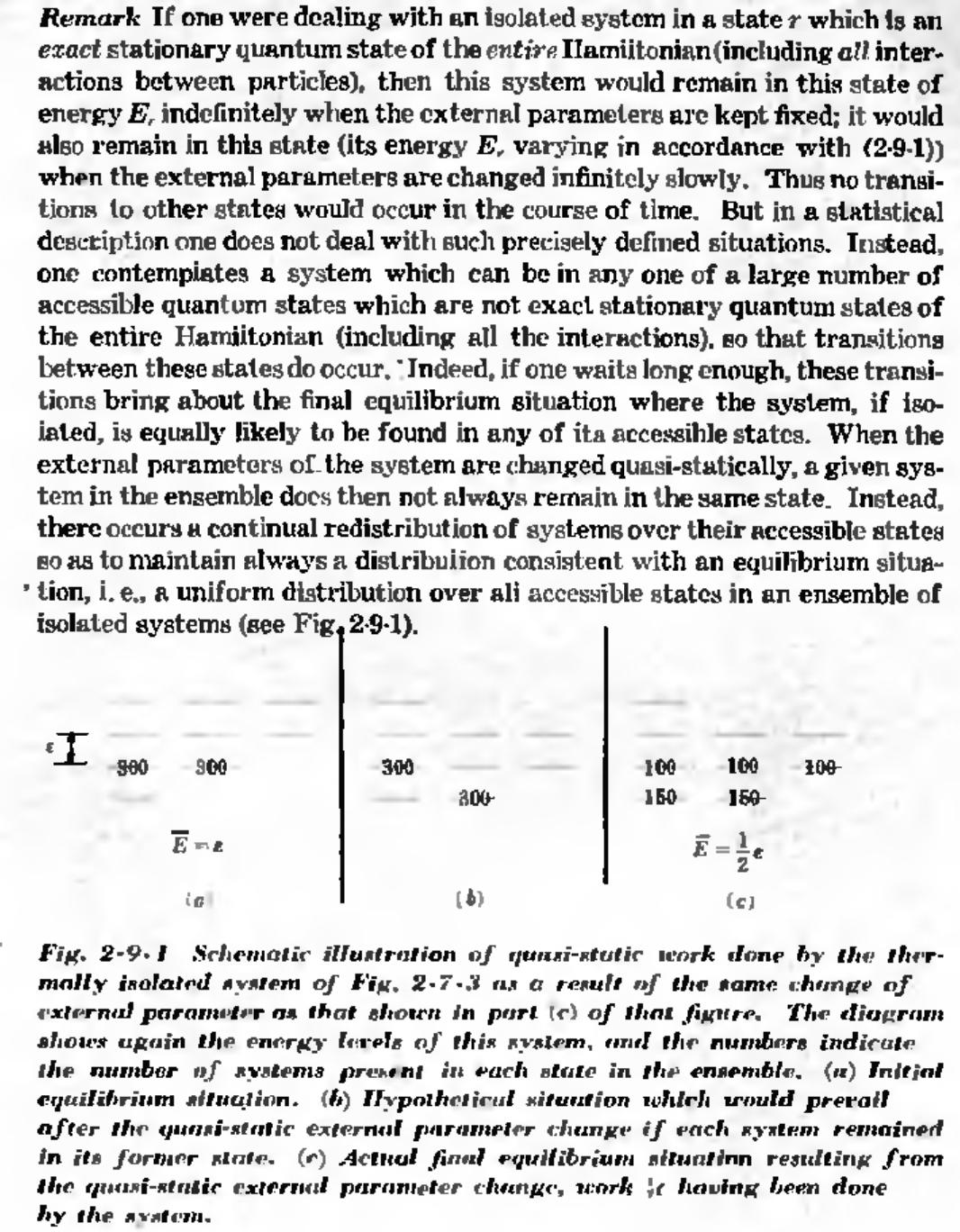I am currently reading Reif's Fundamentals of Statistical and Thermal Physics and I am unfortunately rather baffled at the end of Chapter 2 which Reif wraps up with a discussion of quasi-static processes. At the bottom of page 75, a quasi-static process with respect to some system $A$ is defined as (I paraphrase)
a process (involving the performance of work, exchange of heat, or both) which is carried out slowly relative to the relevant relaxation times for $A$ such that $A$ is approximately in the equilibrium appropriate to the external parameters and conditions enforced on $A$ at that instant.
Reif then goes on (on page 75) to show that the infinitesimal work $\delta W$ can be computed using the mean generalized forces conjugate to the relevant external parameters; but, in this derivation, it is assumed that a given microstate remains in that state (evolves adiabatically in the quantum mechanical sense). In contrast, Reif remarks just later that, even in a quasi-static process with no thermal interactions (only work), it is not true that evolution occurs such that states do not transition (again, not true that evolution occurs adiabatically in the quantum sense). These seem to be at opposition/there seems to exist a contradiction since the derivation assumed that microstates do not transition?
If my discussion above was not clear, I have attached the relevant passages below. The seeming contradiction lies in the sentence above (2.9.3) and then the closing (gray box) remark:



